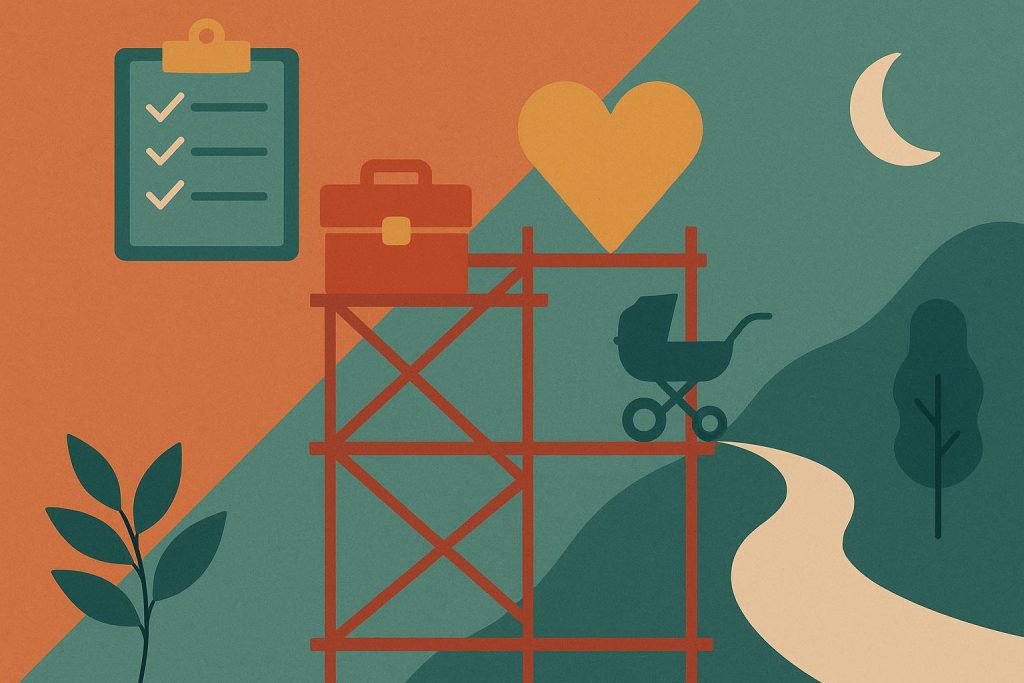There’s a quiet movement happening among women who’ve decided that healing doesn’t have to mean hiding. They’re not stepping away from life to rebuild—they’re rebuilding in motion. They’re raising kids, meeting deadlines, and navigating recovery without the white-picket-fence version of “balance” that never existed to begin with. The truth is, for many women, the path to recovery looks less like retreat and more like renegotiation—of time, energy, and identity.
The Myth Of Having It All Together
Women are still sold the idea that “balance” is a matter of perfect scheduling. Wake up early. Meditate. Juice cleanse. Thrive. But what happens when your body and mind are in repair mode and the world keeps spinning? For women in recovery, it’s not about balance—it’s about endurance. The kind that doesn’t look glamorous but gets you through long mornings when you’d rather cancel the day entirely.
Recovery doesn’t press pause on real life. Many women have jobs that depend on them, kids who need them, and partners who may not fully understand what they’re carrying. They learn to build scaffolding out of small victories instead of perfection—showing up to work clear-headed, going for a walk instead of scrolling through triggers, choosing to rest instead of overperforming. It’s not tidy, but it’s honest. And honesty, more than any program or slogan, is what holds everything up.
Finding Freedom In Redefinition
Sobriety isn’t about subtraction. It’s about adding back what was missing. That might mean creativity, connection, or a sense of direction that got buried under years of coping. Women are realizing that recovery isn’t about becoming a new person—it’s about remembering the one who’s been waiting underneath the chaos.
That process doesn’t look the same for everyone. Some find grounding through writing, faith, or therapy. Others find it in movement, music, or community. What’s changing is the language around it. Recovery isn’t being whispered about in corners anymore; it’s showing up in open conversations, wellness spaces, and social media feeds. Women are giving it texture, humor, and realism. They’re allowing recovery to look human instead of saintly—and that shift is saving lives quietly and consistently.
Why Connection Still Matters
Despite how individual recovery can feel, no one does it alone. Isolation might feel safe, especially after the burnout of addiction or the fatigue of rebuilding, but connection is what re-teaches the nervous system how to trust the world again.
Support doesn’t always mean standing in a circle of strangers reading from a script. Sometimes it’s a late-night text to a friend who understands the edge you’re on. Sometimes it’s a local support group that doesn’t preach perfection but meets you where you are. Even virtual therapy or sober living communities can be lifelines, especially for women managing families, work, or limited mobility. For those seeking women’s rehab in Texas, Virginia or anywhere in between, the options are more dynamic and accessible than ever. Programs are shifting toward whole-life healing—acknowledging that sobriety means far more than not drinking. It means learning how to feel again, in a world that doesn’t slow down for healing.
The Cities Making Space For Recovery
Across the country, local governments and grassroots organizations are redefining what recovery access looks like. From Los Angeles to Austin to Richmond, there’s a noticeable rise in sober living collectives, trauma-informed clinics, and women-centered housing programs that prioritize safety and dignity over punishment or shame. These are cities leading the way in showing how community infrastructure can support real, lasting change.
What makes these efforts so powerful is their tone—they don’t treat addiction as a moral failure but as part of a much larger story of resilience. Public health approaches are catching up to what women have known all along: healing happens best when there’s compassion in the room. The result is not just better outcomes, but better lives.
The New Normal Of Healing
Recovery used to be something you did in secret, emerging later as a “success story.” But that model doesn’t fit the modern woman who’s managing bills, parenting, or showing up at the office in the middle of her healing process. There’s no dramatic “before and after.” There’s just the day-to-day work of doing better—sometimes quietly, sometimes triumphantly, but always forward.
Healing in real time means accepting that you can hold strength and exhaustion at once. It means finding joy without waiting for permission. It’s messy, and it’s ongoing, but it’s real—and it’s working. The women leading this quiet revolution aren’t just recovering; they’re rewriting what thriving actually looks like in a world that demands more than it gives back.
Moving Forward
Every woman walking this path deserves credit for what doesn’t make the highlight reel—the mornings she wakes up determined to try again, the moments she chooses connection over avoidance, the countless times she forgives herself for being human. That’s the real recovery story, and it’s still unfolding every day.
There’s no applause line for healing, but there’s peace in the steady rhythm of progress. Women are proving that recovery doesn’t have to mean stepping away from life. It can mean stepping into it with a clarity that’s hard-won and deeply grounded. And that’s a kind of power no one can take away.

